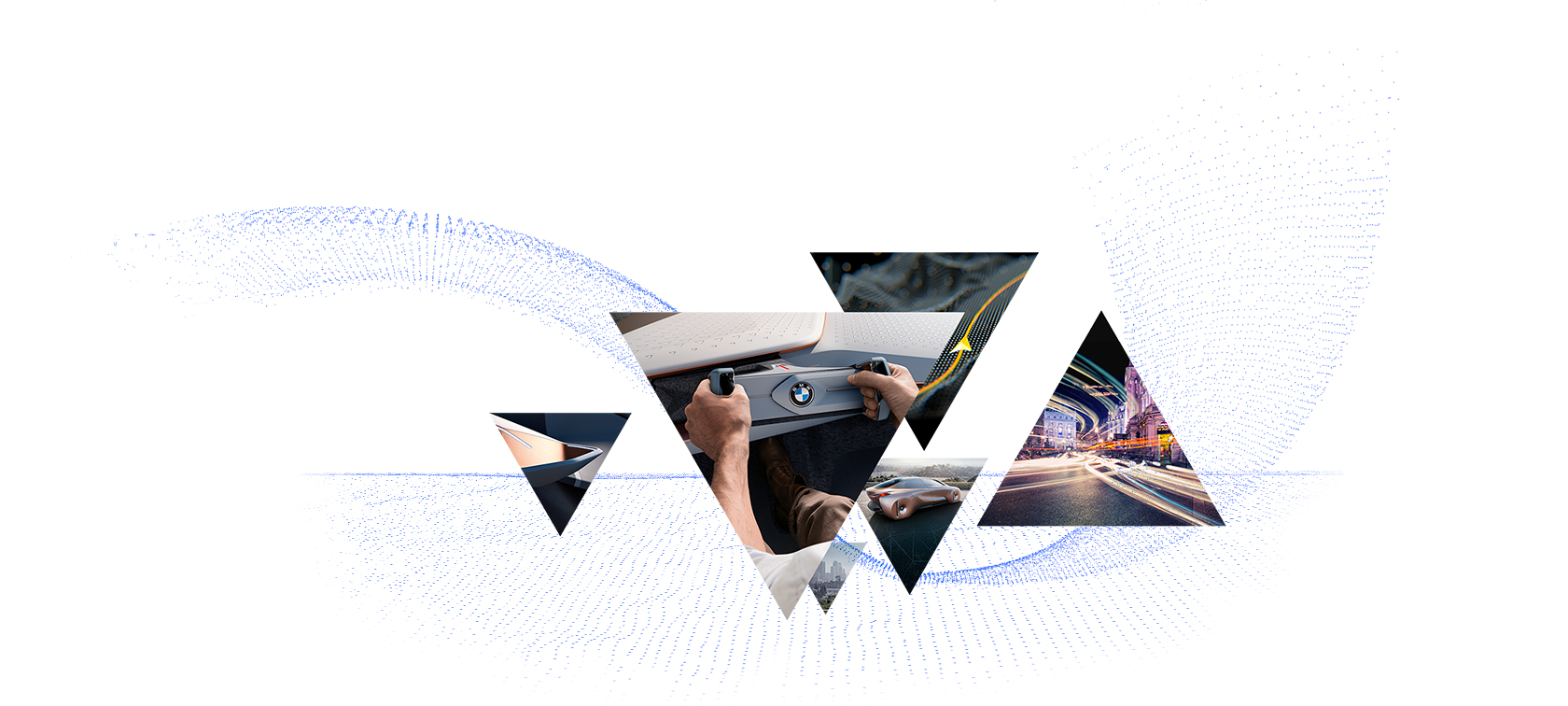Our tool for managing your permission to our use of cookies is temporarily offline. Therefore some functionality is missing.

WEIRD, WONDERFUL AND MOVING: THE NEWS DRIVING TOMORROW’S MOBILITY.
We intend to be as much a part of the stories shaping the next 100 years of mobility as we have the last. So we’ll be sharing these stories with you on our www.next100.bmw platform over the coming months. Articles that will look back on 100 years of BMW, at the technologies and innovations shaping tomorrow’s mobility – plus exclusive videos and pictures of our BMW VISION NEXT 100 and BMW Group Future Experiences world tour.
We intend to be as much a part of the stories shaping the next 100 years of mobility as we have the last. So we’ll be sharing these stories with you on our www.next100.bmw platform over the coming months. Articles that will look back on 100 years of BMW, at the technologies and innovations shaping tomorrow’s mobility – plus exclusive videos and pictures of our BMW VISION NEXT 100 and BMW Group Future Experiences world tour.

THE VIEW AHEAD – A REVIEW: THE HISTORY OF THE WINDSCREEN.
At the beginning of the 20th century, when the horseless carriages were trundling over the streets at increasingly high speeds, drivers were facing an entirely new problem: the airstream. It not only blew unpleasantly around their noses, but also had an adverse effect on driving itself, for example due to dirt particles it stirred up, not to mention the precipitation or small stones and insects. The solution: a transparent pane of glass, the “windscreen”.
THE VIEW AHEAD – A REVIEW: THE HISTORY OF THE WINDSCREEN.
At the beginning of the 20th century, when the horseless carriages were trundling over the streets at increasingly high speeds, drivers were facing an entirely new problem: the airstream. It not only blew unpleasantly around their noses, but also had an adverse effect on driving itself, for example due to dirt particles it stirred up, not to mention the precipitation or small stones and insects. The solution: a transparent pane of glass, the “windscreen”.

WHAT LUXURY!
Nevertheless, the first versions were only made of fire-polished window glass and quickly broke due to small stones or cracks forming as a result of shocks. Large shards of glass posed a dangerous threat of injury to driver and passengers.

SAFETY FIRST.
In the years that followed, the pace of innovations in glass production also aroused increasing interest amongst designers and was a source of inspiration for car makers around the world.

AERODYNAMIC CURVES.
Curved windscreens are not only aerodynamically advantageous; they also give the driver a better all-round view. However, their influence on automobile design was particularly evident. Convex windscreens, curved to the sides as well as to the top and bottom, are now standard in car production. Glass is in fact playing an increasingly large role. Overall, the area of glass used in comparable models has increased by approx. 50 per cent over the last 35 years. On average, the windscreen has even increased in size by 60 per cent.

A SUPPORTING PILLAR.
In modern convertibles, for example, such as the current BMW 2 Series Cabriolet, an additionally reinforced windscreen frame takes on the function of the A pillar and protects passengers in case the vehicle rolls over. And that’s not all. In the event of a collision, support for the expanding front passenger airbag on the inside is provided by the windscreen, which bears the resulting load effortlessly.

IT’S NOT JUST GLASS. IT’S A FEATURE.
Development of the Head-Up Display was equivalent to a quantum leap. This is a technology on which several car makers are working in parallel and one which BMW introduced as a standard feature in the BMW 5 Series in 2003, becoming the first European car manufacturer to do so. The Head-Up Display projects important information that is relevant to the driver onto the windscreen and thus directly into the driver’s field of vision – in colour and, depending on the incident light, in varying degrees of brightness. It is an optical system that had hitherto been reserved for jet pilots.

A REVOLUTION.
In technical terms, the information is projected onto the windscreen via several mirrors. For the driver, however, the display appears to be hovering freely above the hood at a distance of about two metres. The extent of the data displayed has increased steadily over the course of the years. Today, the information displayed not only includes current speed or navigation directions, but also driver assistance information such as the Lane Departure Warning or gear shift indicator. A sportier M-specific display including rpm range is also available.

THE VIEW AHEAD TURNS TO THE FUTURE.
The possibilities of communicating or retrieving information that is relevant to the driver via the windscreen will be almost unlimited in the future. And particularly by considering location-based services, data from social networks or even entertainment offers.
To summarize, we can probably expect the windscreen to remain with us for the next 100 years. As a basic splashguard but also as an interactive multimedia touchscreen control element.


